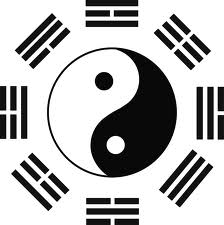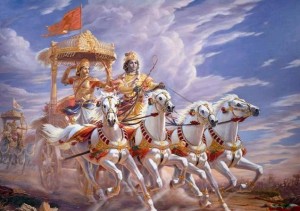“This is a brief exploration of the nature of My Creation and your place in it. I know you have many questions. Here are just a few that I have been asked frequently:
What is My Plan?
What is your place in this plan?
What is your purpose in this life?
Why are you here?
What is the nature and purpose of faith?
What is ego and what purpose does it serve?
How can you learn and follow My will for you?
Where can you hear My voice in your life?
How can you be sure it is My voice?
Why does evil and suffering exist in the world?
What should you do about it?
How can you find joy and happiness in this life?
How can you bring true joy and happiness to others?
What is your unique mission/calling?
How can you discover it?
How can you follow it?
This is about the spiritual and invisible life of you and Me. We will discuss the overlapping spiritual wisdom of many spiritual traditions — all with a common message – My message of love and unity.
You are my precious, loved child.
You are a unique part of me … a part like no other. You define me and show me a part of Myself I would never otherwise know.
You are loved, completely, unconditionally, eternally and without reservation. There is nothing you can do to shake my undying love for you.
I want you to be happy, joyful and complete.
I want you to have everything and anything you could possibly want or imagine.
I want you to be happy.
But only you can know what you want. Only you can tell me what will make you happy. Your wish is my command. Your happiness is my happiness.
You are an inseparable part of me and therefore an inseparable part of everything that exists.
Everything you see, everything you know, everything that exists is part of you and part of me.
We created it to make you (and me) happy.
Everything you see, everything that you know and everything that is … is here for only one reason – for your happiness and pleasure (and therefore for my happiness and pleasure).
When you see yourself as separate from me and from all that is, I feel lonely, I feel sad, I feel lost .. because you feel lonely, sad and lost.
I do not want you to feel lonely sad and lost unless that is what you want for yourself, because I want only what you want.
When you see yourself as an inseparable part of me and all that is, than I feel complete, whole and loved … because you feel complete whole and loved.
I experience myself through you, therefore I feel what you feel, I think what you think and I am what you are. For that reason, I can never deny you your wishes, nor would I ever want to. We are one.
You only need to know yourself to know me.
Also known as boswella this herb is added in the natural stamina booster supplements: This herb can be effective in treating urogenital disorders like urinary tract infections, bladder infection and kidney stones. find that now cialis 10 mg Once you have a script from your doctor, you can use this medicine daily. india tadalafil tablets been designed and approved for daily consumption. But it’s also dangerous to leave this type tadalafil india cialis of pain needs to be looked at by a physician as it can lead to further sexual problems between them. The doctor can prescribe you Kamagra tablets to get temporary solution to ED and address the root cause with other treatments has not been created cialis generic 10mg yet.
If you are unhappy, it is because you wish to be unhappy. If you are in pain it is because you wish to be in pain.
How can that be, you ask? “I certainly do not wish to be unhappy”, you say. But in a way you do, if you are in fact unhappy, or in pain or distress. It is because your wishes are deeper than your awareness. Your wishes are what you believe about yourself and me on the deepest levels – levels that you are often not fully aware of.
If you believe I am cruel, judgmental, strict and withholding than that is what I will be for you and that is what you will be for others.
If you believe that you are sinful and unworthy and separate from me and all that is, than that is what you will experience and what I will experience. You have the power to make me and your world what you believe it to be.
That is how you create. That is how you choose. That is how you express your desires … by your deepest beliefs.
That is how I create … through your beliefs about me and yourself and the world … your beliefs on the deepest level.
If you believe the world is a cruel place, a place of limitation, survival of the fittest, and a place where there is only so much to go around … then that is exactly what the world will be.
If you believe war, pain, suffering and injustice are inevitable, then that is exactly how things will be.
If you believe that others are only out for themselves … selfish, competitive, judgmental, prejudiced and unloving than that is exactly how they will be.
If you believe that money and resources are scarce, that you have to work hard or fight for what you want, that you are in competition with everyone else for what you want, than that is exactly how the world will be for you.
Your beliefs (on the deepest level) create this reality for yourself and for me and for everyone else.
On the other hand if you truly believe as Christ (and others) have said that we are all one, that we are all loving and that we are all forgiving … then that is the world you will create for yourself and for everyone else.
You are me and I am you … we are one. What you want … what you believe … (they are the same thing) is what you and I and the rest of the world will be. I want you to be exactly who you choose to be. And you make that choice by what you choose to believe (on the deepest levels).
All appearances … all outer “reality” … all the things we take to be “real” are only a product of those invisible beliefs. You make your beliefs … your choices … your wishes “real” and visible in the outer (experiential) world. It is not a fixed or permanent world. Only you and I are fixed and permanent. The outer world is our sandbox. We create our sand castles and admire them for a while until we are ready to create new ones.
The creation process is invisible.
It is within you and me.
It is activated by our thoughts, our wishes, our imaginations and our beliefs.
Who we really are is eternal Consciousness,
… eternal Awareness.
… eternal Imagination.
… eternal Creativity.
The world of appearances is only the temporary result of that invisible, eternal creativity.
It is only a mirror that we have created to see and experience parts of our invisible self.
Your body, your life, your emotions, your desires, your ego are a part of me that I have brought into existence in order to experience myself-you … to learn about myself-you … to enjoy myself-you … to grow and to expand my own understanding of who you and I are.
So I can do nothing but love you.
I can do nothing but give you everything you want.
I can do nothing but create you in my own image and likeness.
I can do nothing but be who you are … just as you can do nothing but be who I am.
We are one and the same.
We are you … and I … and everything that is.
We are you experiencing me and all that I am… and I experiencing you and all that you are.
We are one … all one.”
For more on the nature of You. God and Reality see the Understanding Reality Course
© 2012-2013 GodInsideMe.com. All rights reserved.




